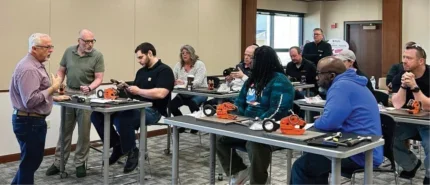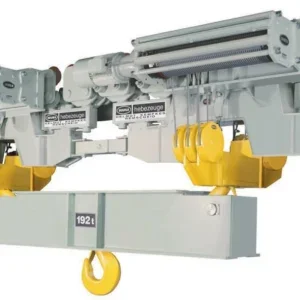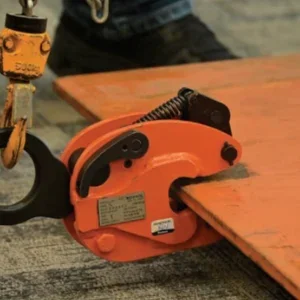
Clamps are designed to create a clamping force perpendicular to the surface of the load. These clamping forces are generated from the clamp geometry by the pulling force on the lifting shackle of the clamp or tightening of a screw. Clamps can be used for attaching loads to a hoist, or for other load handling purposes, such as anchoring or positioning. Importantly, the load being lifted must be able to support the amount of squeeze that the clamp applies to the load.
At the top end of the market, a single manufacturer might make 200 types of clamps. Common among them are friction, pressure-gripping clamps; indentation, pressure-gripping clamps; anchoring clamps; positioning clamps, used to hold or locate parts during assembly operations; and hybrid clamps, which are a combination of the others.
Good inspection and maintenance programmes extend equipment life and protect investments, which is why training on clamps should be more prevalent at the point of use. While the dollars are important, the real benefit of this training is ensuring that users are actively involved in their own safety protections. Familiarity with the equipment, a deeper understanding of how it works, and the constant reminder of the clamp’s condition, means inspectors and users know more and have better information with which to make decisions about use and ultimately safety.
A certain level of understanding about clamps can be gathered via manufacturers’ literature. All Renfroe clamps, for example, come with an operator’s manual and all clamp users can find details on the Caldwell website in case paperwork ever goes missing. The Renfroe manual outlines inspection protocols. If, during what we call every-lift inspection, the operator believes the clamp exhibits excessively worn parts or is damaged, the clamp should be inspected by a qualified person who will decide as to its fitness. At this time, the condition of the clamp should be noted and recorded. After inspection, it may be decided that a periodic inspection procedure is necessary. Our documents cover frequent and periodic inspection criteria.
Importance of training
Training is required in support of the documentation provided with products. Reputable manufacturers will offer these sessions; many have dedicated training facilities. At our Beloit, Wisconsin location, we host delegations from end-user companies, looking to give their workers the tools they need to know when items should be removed from service and then, upon further inspection, be rebuilt or replaced. Manufacturers should offer this to their reps, dealers and channel partners too – anyone who might have a need to inspect, maintain or rebuild clamps.
Quality training includes both classroom and hands-on sessions – both should be tailored to the specific needs of the delegation of the day. A first step might be learning how clamps work and the different types available. That helps when it comes to explaining how to inspect them. Practical training on how to rebuild clamps is likely given later in the course.
Ideally, there will be a trained maintenance person or team at a facility that keeps track of all the clamps – and other rigging gear – that they use. Inspection is useless if those inspecting the equipment don’t know what they are looking for. Issues should be recorded by serial number and clamp model, and a record kept for tracking purposes. These worn clamps must be clearly marked, removed from service and placed in a designated area for further inspection, rebuild or disposal.
Remember, it isn’t always necessary to dispose of and replace a clamp. Special programmes and rebuild kits are available to help, so rebuilds can be carried out by the user or manufacturer. Or, if preferred, our customers can phone our service department and arrange for the clamp – or indeed clamps – to be returned for a factory inspection and evaluation. Once inspected, a quote will be furnished for any necessary parts required to make the clamp in a new and useable condition. They can even be shipped back to the point of use with a new certificate of proof test, if required.






